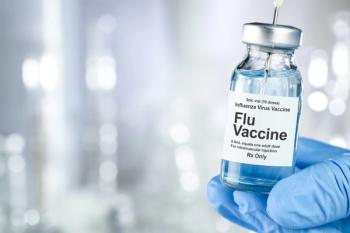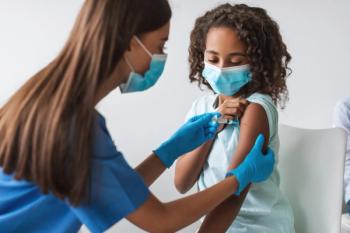
Social Determinants Associated With Low Immunization
Experts discuss the social determinants that can affect the rates of flu immunizations and strategies to boost immunization rates.
Episodes in this series

Rodney E. Rohde, PhD, MS, SM (ASCP) CM, SVCM, MBCM, FACSc: Dr Welch, what social determinants, and maybe you can define that for our audience, are associated with lower rates of flu immunizations? Things like access to care, health literacy, where they live, their economic standing. And really, what can we strategy wise do to mitigate some of that?
Adam C. Welch, PharmD, MBA, FAPhA: There are several social determinants. We can look at race and ethnicity. We know that African Americans are more likely to be hospitalized due to influenza than Caucasians. We can also look at more social aspects; the lack of access to health care, lack of health care insurance, people’s misinformation about vaccines. There is this general distrust of the medical system and medical institutions, and missed opportunities to vaccinate, so they were seeing a provider during flu season and they did not get the vaccine, all of these things are contributing to people not getting vaccinated. There’s a recommendation for a universal influenza vaccine for people 6 months and older. That’s almost everyone in this country. Not nearly everyone in this country is getting the flu vaccine. Data from 2021-2022 season [showed] 54% of the white population had gotten vaccinated, 54% of the Asian population, [and] it’s in the 40% for African Americans and Alaska Native, American Indians, and even less for the Hispanic population. So there’s a long way to go to get people vaccinated because we’re seeing these complications from influenza in certain demographics, certain socially vulnerable populations. We still have work to do.
Rodney E. Rohde, PhD, MS, SM (ASCP) CM, SVCM, MBCM, FACSc: Thoughts on this topic?
Chad Worz, PharmD, BCGP, FASCP: It comes back to that relationship word again. Randy talks about community. How do we get into the communities within the communities? How do we have relationships or find people that have relationships? We talked a lot during COVID-19 about using religion as a way to penetrate some of these hard to get to areas. We’ve done a study at ASCP [the American Society for Clinical Pathology], looking at USA boxing, and the boxing community as a way to pair vaccinations with a tight community that will listen to themselves if you present these opportunities, and they’ll talk about it. I think it’s finding those ways to really penetrate the different idiosyncrasies and unique factors of communities and find those people that they trust and get the message out.
Randy McDonough, PharmD, MS, BCGP, BCPS, FAPhA: When we did our study, we did look at social determinants of health. Now, these are patients that we have access to which is interesting, and we found 3 main areas, homelessness which totally shocked me that I had patients who are homeless. We had a lack of transportation and unaffordability, and all those things were preventing them from accessing health care. But what we learned, that was before COVID-19, but then when we got into COVID-19, and we started working with the Social Services Department, we started working with Johnson County Public Health, we started recognizing that there’s a whole group of patients that just are not accessing anything. Again, how do we work with these different organizations to reach out to these patients? What I’m excited about is the whole community health worker aspect, because its not just technicians, other people are being trained as community health workers. They’re the ones who are going to be reaching out to the patient, meet them where they’re at, and then connect them with the resource within that community. I just think that that’s going to open up a lot of opportunities out there.
Adam C. Welch, PharmD, MBA, FAPhA: The CDC [Centers for Disease Control and Prevention] has $150 million initiative called Partnering for Vaccine Equity, and part of the foundation of that is what you just mentioned, establish a trusted messenger. It may not be us as pharmacists. It’s typically someone who looks like the patient or sounds like the patient and can relate with them, but partner with them within the community and build that message through that trusted messenger and get people thinking about the influenza vaccine.
Randy McDonough, PharmD, MS, BCGP, BCPS, FAPhA: As I said, there’s a lot of opportunity with this too, within pharmacy, with the CDC having a lot of funds out there, that are given to the public health departments locally at the state level to address some of these things, and how maybe pharmacy can be part of that solution. So they should probably be looking at their local public health department right now.
Rodney E. Rohde, PhD, MS, SM (ASCP) CM, SVCM, MBCM, FACSc: I always talk about it with respect to even other issues, antibiotic stewardship. We know that’s an issue in the country and things like that, but I refer to it and I’m aware of the CDC study that’s kind of a champion. It’s probably not us. It may be Magic Johnson. Have you seen some of the commercials he’s doing [on] RSV [respiratory syncytial virus] conversation, I mean, this is really smart marketing. Again, pharmacy, physicians, health care in general, and I think we are starting to realize that the doctor doesn’t always know the perfect way to get the message across. We’re there to do what we need to do, but certainly, this is really critical. Well, gentlemen, I think we have reached our point of closure. I appreciate your expertise and your time today. And as we wrap up, I want to thank you. I want to thank our viewing audience. We hope you found this Pharmacy Times® Peer Exchange to be very rich and informative, and until next time, take care of yourselves.
Transcript edited for clarity.
Newsletter
Stay informed on drug updates, treatment guidelines, and pharmacy practice trends—subscribe to Pharmacy Times for weekly clinical insights.





